Top 7 IELTS Reading Tips: How to Improve Your Score
For many IELTS test-takers, the Reading section is a significant hurdle, often due to its intense time pressure and complex texts. Mastering this skill is crucial for a high score, as it demonstrates your ability to effectively process and understand written information. The practical, actionable IELTS reading tips in this guide from IELTS-Testpro will help you improve your reading skills, manage time effectively, and confidently tackle even the trickiest questions.
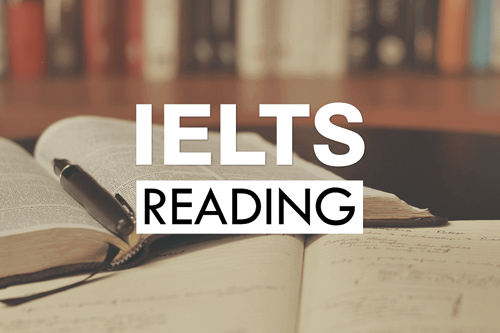
I. IELTS Reading Tips: Test Overview
The IELTS Reading test is designed to assess a wide range of reading abilities, not just your understanding of individual words. It evaluates your capacity for grasping main ideas, locating specific details, skimming effectively, understanding logical arguments, and identifying a writer’s viewpoints, attitudes, and purpose.
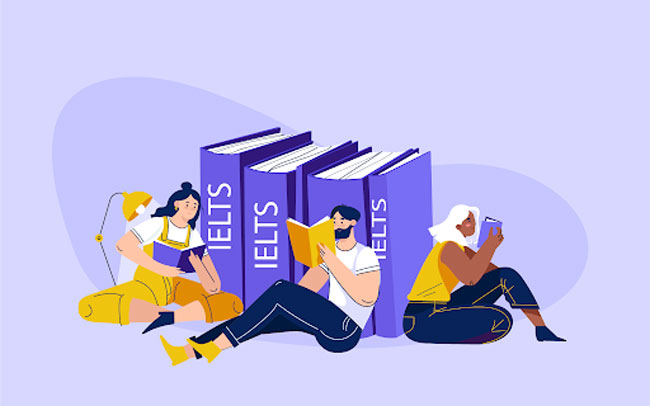
Test takers read three long passages, which are typically complex texts on various topics, and must answer 40 questions. This entire section must be completed within a 60-minute time limit. The implication of this is critical: you have, on average, only 90 seconds per question, which includes the time needed to read the passages. Simply reading faster is not enough; mastering this test requires a combination of strong reading comprehension and, most importantly, effective test-taking strategies.
II. Types of Questions in IELTS Reading Test
The IELTS Reading test features various question types. Being familiar with these formats helps improve your accuracy and speed during the exam, as each requires a slightly different approach.

- Matching Headings: You must match a list of headings (short summaries) to the correct paragraphs or sections of the passage. This tests your ability to understand the main idea of a whole paragraph, not just one specific detail within it.
- Matching Information: You need to find specific information (e.g., causes, reasons, descriptions) within particular paragraphs. This differs from Matching Headnings, as the answer is often a small detail, not the main idea of the paragraph.
- Matching Sentence Endings: You must match the beginning of a sentence with the correct ending based on the information in the passage.
- Yes/No/Not Given or True/False/Not Given Question: You must determine if a statement accurately reflects the information (True/Yes), contradicts the information (False/No), or is not mentioned at all (Not Given). The challenge here is mastering the difference between ‘False’ (the text says the opposite) and ‘Not Given’ (the text doesn’t provide this information).
- Multiple Choice: You choose the correct answer from several options (e.g., A, B, C, or D).
- IELTS Reading Short Answer Questions: You answer specific questions using a few words or numbers taken directly from the passage.
- IELTS Reading Sentence Completion Questions: You fill in the missing words from the passage to complete a sentence.
- Summary/Table/Flow Chart Completion: This task requires the candidate to complete missing information in a summary, table, or diagram using words sourced directly from the text.
- Diagram Label Completion: You must label a diagram, map, or illustration based on the information given in the reading text.
III. Common Mistakes in IELTS Reading Test
To perform well in the IELTS Reading test, it’s essential to not only apply the IELTS Reading tips but also avoid common mistakes that can lower your score. Here are the most common mistake test takers usually make that you should watch out:

- Spending too much time on one question: Overanalyzing a single question can waste valuable time and leave you rushing through others.
- Not skimming or scanning effectively: Failing to quickly locate key information can lead to missed answers and confusion.
- Ignoring instructions: Overlooking word limits or specific requirements can result in incorrect answers, even if your response is accurate.
- Guessing without understanding: Random guesses without referencing the passage often lead to errors.
- Misinterpreting True/False/Not Given or Yes/No/Not Given questions: Many candidates confuse “Not Given” with “False” due to incomplete comprehension of the text.
- Not managing time properly: Spending too long on one passage can leave insufficient time for others.
- Misreading the question: Missing keywords or failing to understand the question’s focus can lead to incorrect answers.
- Over-relying on prior knowledge: Answers must be based primarily on the passage, not solely on your general knowledge or assumptions.
- Failing to review answers: Simple mistakes can be caught and corrected with a quick review if time permits.
- Ignoring synonyms or paraphrases: The exact wording of the question may differ from the passage, so spotting synonyms and paraphrases is essential.
IV. Top 7 IELTS Reading Tips
Mastering the IELTS Reading test requires effective strategies and consistent practice. Here are the best techniques to improve your skills and achieve your target band score.
Tip 1: Read the Instruction Carefully
This is one of the most essential tips, yet often overlooked in a rush. Before you even read the passage, check the word limit (e.g., “ONE WORD ONLY”) for completion tasks. This simple step is crucial to get right and avoids losing easy points.

Tip 2: Practice Paraphrasing Skill
Mastering paraphrasing is critical. The test rarely uses the exact same words from the question in the passage; instead, it uses synonyms and rephrased sentences. You should actively practice this skill. For example, as you practice, start building a “synonym bank.” When you see “increase,” think “growth,” “rise,” “expansion.” This active preparation makes you much faster at spotting answers during the real test.

Tip 3: Increase Reading Speed with Skimming
Skimming is the technique of moving your eyes quickly across the text to get the general idea and understand the structure. The goal of skimming is not to understand every detail, but to “map” the text. You are finding out where the main topics are located, so you can return to them quickly when you see a relevant question.
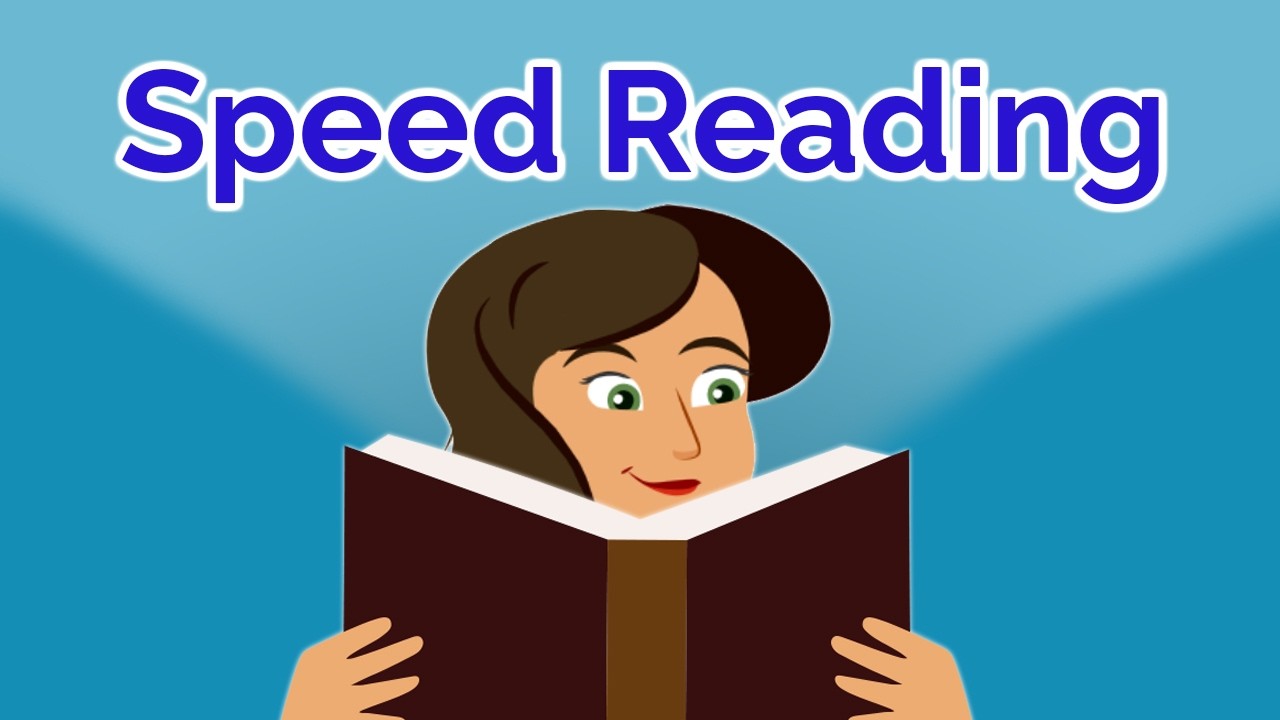
You can apply this IELTS Reading technique with these steps:
- Read the first paragraph carefully to get an overview of the text.
- Next, pay attention to the first few sentences of each paragraph, this will give you the main idea of each paragraph.
- Always read the last paragraph carefully because this paragraph often contains a summary of the entire article, a conclusion, or a lesson learned for an issue mentioned in the article.
Tip 4: Find Detailed Information when Scanning
Scanning is the direct follow-up to skimming. While skimming (Tip 3) gives you the general idea, scanning is how you pinpoint specific details. When you scan, your eyes should be moving in a specific pattern (perhaps an ‘S’ or ‘Z’ shape) looking for just one thing: the keyword (like a date, name, or number). You are not reading full sentences; you are actively hunting for a piece of data.
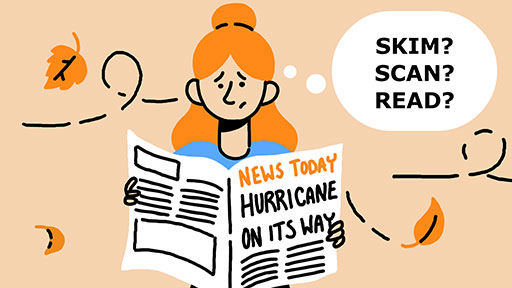
Follow these IELTS Reading tips:
- Underline important information like names, dates, figures, and statistics.
- After reading the question, identify the keywords and then scan the text for those keywords and possible synonyms.
- Spend less than 3 minutes skimming a passage. Be quick and focused to find the information as quickly as possible.
Read more: Skimming and Scanning – The Powers of Reading Techniques
Tip 5: Focus on the Idea, not Every Word
In the IELTS Reading test, many candidates make the mistake of reading every word carefully. This approach wastes time and can cause confusion. Instead, focusing on the main idea allows you to find answers faster and improve overall comprehension.
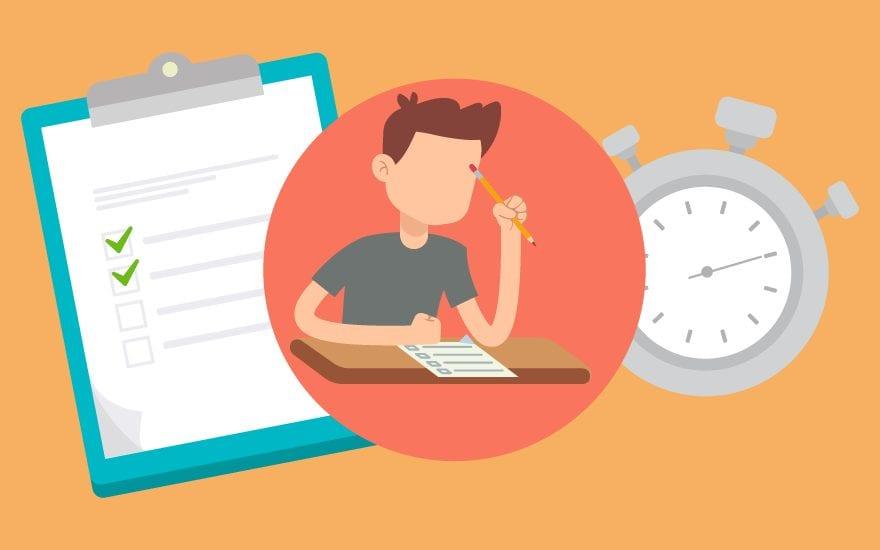
This is amongst the most unique reading tricks IELTS, involving reading the text overview and paraphrasing the information in your own words. This initial analysis helps shift your attention to the main ideas and messages, instead of getting caught up on individual words, which is crucial since the answer you need is often paraphrased.
Tip 6: Underline and Highlight Important Information
Once you find the exact location of the paraphrased answer in the reading passage, you need to compare the keywords between the question and the answer choices. If the information does match, you should underline the important information or note the location of the keywords in each question.
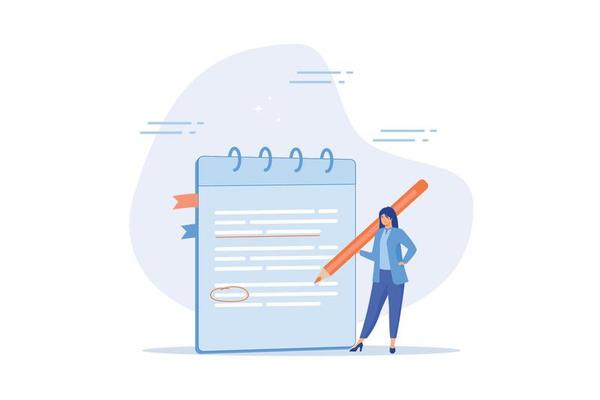
Additionally, there is always only ONE correct answer to each question. This is how tests are designed. That is exactly why the correct information for that question will be in a very easy to find out the location.
Tip 7: Determine the context
The last reading tricks IELTS for you is to examine the surrounding words or the sentence’s overall meaning to determine whether it conveys a positive or negative tone, or if it refers to a person, job, animal, or characteristic.

You can also analyze prefixes like “un-” (which negates an action), “re-” (indicating repetition), or “-wise” (signifying reference to something).
Conclusion
Achieving a high score in the IELTS Reading test requires a combination of effective strategies, time management, and regular practice. By understanding the test format and apply IELTS Reading tips, you can significantly improve your performance.
Consistent practice with online IELTS test and IELTS materials on IELTS Test Pro will enhance your confidence and accuracy. Follow our Blog for other articles about IELTS tips, stay focused, and you’ll be well on your way to reaching your target band score.